Welcome to another edition of Willoughby Hills!
This newsletter explores topics like history, culture, work, urbanism, transportation, travel, agriculture, self-sufficiency, and more.
If you enjoy what you’re reading, please consider a free subscription to have this newsletter delivered in your inbox twice a week:

We are in the heart of maple sugar season here in Massachusetts. I’ve been making my own syrup for the last three years and documenting the process on my Instagram (give me a follow if you’re not already).
I’ve also written about my journey as a home boiler in this newsletter over the years, although it’s always been a bit sporadic. I’ve never really told the story of how I found this hobby, what the process is like, and why I continue to do it. Today’s issue will dive into these topics.
The Inspiration
My maple syrup journey began in 2015 when I produced a segment for Ask This Old House about how syrup is made.
We filmed the story at the beautiful Shelburne Farms outside of Burlington, Vermont. The goal was to encourage people to tap their own maple trees. We did our best to show at-home options, but we were at a commercial facility and it was hard not to be intimidated by the scale of the operation. I certainly felt that being in person, and I can only imagine that the audience may have had a similar reaction.
After that, I would look at the maple trees in my own backyard from time to time and consider taking the plunge and making maple syrup. Still, it seemed intimidating and not for the faint of heart.
In a piece I wrote about making my own sauerkraut, I attributed my interest in home fermenting to reading The Boxcar Children. With making maple syrup, it was Laura Ingalls Wilder that made the process come alive. Perhaps children’s literature is more powerful than we realize.
My grandma was always a fan of the Little House books. She and my grandpa once visited De Smet, South Dakota specifically to visit the Ingalls Homestead. The books had always been around in my childhood, though my memories of that series were more rooted in Melissa Gilbert and Michael Landon than Ms. Wilder.
Around 2019, I was becoming increasingly curious about what life was like in simpler times, and it seemed like revisiting Wilder’s account of life on the frontier might fulfill my curiosity.
I started with the first book in the series, Little House in the Big Woods, which describes the Ingalls family life in a cabin in Wisconsin before they migrate to the prairie.
The book includes a long passage where Laura’s dad (known as “Pa”) describes to Laura how her grandfather builds wooden buckets out of cedar or white ash and whittles his own wood troughs. The troughs get installed in a drilled hole in sugar maples when the cold winter days start to become warmer.
Pa goes on to tell Laura more about her grandpa’s process:
“‘The sap, you know, is the blood of a tree. It comes up from the roots, when warm weather begins in the spring, and it goes to the very tip of each branch and twig, to make the green leaves grow.
‘Well, when the maple sap came to the hole in the tree, it ran out of the tree, down the little trough and into the bucket.’
‘Oh, didn't it hurt the poor tree?’ Laura asked.
‘No more than it hurts you when you prick your finger and it bleeds,’ said Pa.
‘Every day Grandpa puts on his boots and his warm coat and his fur cap and he goes out into the snowy woods and gathers the sap. With a barrel on a sled, he drives from tree to tree and empties the sap from the buckets into the barrel. Then he hauls it to a big iron kettle that hangs by a chain from a cross-timber between two trees.’”
Pa also describes how Grandpa boils the sap over an open fire, how it condenses down into maple syrup, and then eventually into maple sugar. At that stage, the maple sugar can be used like cane sugar for sweetening baked goods, coffee, or tea:
“‘When there's a long run of sap, it means that Grandpa can make enough maple sugar to last all the year, for common every day. When he takes his furs to town, he will not need to trade for much store sugar. He will get only a little store sugar, to have on the table when company comes.’”
Part of what appealed to me in reading this passage was that there were local alternatives to cane sugar, which only grows in tropical climates and was an expensive import in Wisconsin of the 1800s. I had never considered that a maple tree could be a source of sugar and was intrigued.
I had read Wilder in 2019 and by the time the pandemic hit in 2020 and we were quarantined at home for many months, I sometimes imagined that I was living a life more like the Ingalls family. (I chatted about this with Halle Stanford on my podcast at the time.)
We began baking our own bread and becoming more resourceful with the items in our own backyard. At one point, inspired by an Instagram post, I even pickled the buds of dandelion flowers to make dandelion capers. Shopping felt unsafe and supply chain disruptions made product availability questionable, so finding ways to make do with what we could forage or create made sense.
When winter came that year, I remembered Pa and Grandpa Ingalls collecting maple sap and thought it might be worth trying. At the time, the TV industry was still quiet and I was only working sporadically, meaning I had more time at home.
Most of my days were spent as a second grade teacher to my daughter, who we opted to homeschool during the height of the pandemic. I liked that homeschooling offered us the flexibility to tailor the curriculum to the world around us. Learning about trees, fire, the states of matter, and where our food comes from seemed like rich lessons that could be taught through the process of making maple syrup.
We ordered a starter kit that included three taps and three buckets and decided to try something new.
The Process
Maple sap is harvested in the late winter anytime the daytime temperatures are above freezing but the nighttime lows still dip below freezing. That first year, we watched the forecast closely and it seemed like February 21 was the best day to install our taps. The ground was still covered in snow, but the high temperatures were starting to creep above the freezing mark.
Maple sugaring is entirely weather dependent. In 2021, the weather told us that February 21 was the right day to begin tapping. In 2022, it was February 2, almost three weeks sooner! This year, our taps went in on February 8, although they probably could have been installed a few days earlier.
Every year, I frantically check the Weather Channel app on my phone and trying to decide the best day to install our taps. But then I think of Laura’s grandpa, who had to rely on his senses and intuition. I’m not sure if he would have owned a thermometer to know whether or not the outside temperature was above freezing- he may have had to discern that by observation and experience.
While Laura’s grandpa would have whittled a trough for getting the sap from under the bark out into a bucket, we use metal taps. They are wedge shaped and install into a hole drilled in the tree. The taps also have a hook from which an aluminum bucket hangs and a hole for a bucket cover to install, which keeps rain water and contaminants out of the sap.
Anytime the weather is above freezing during the day, the sap will flow. Somedays it’s a slow drip, maybe one drop every two to three seconds. On warmer days, it can be even faster, with the drips in the backyard sounding like a metronome tapping out 80 to 100 beats per minute.
The cycle is very dependent on the nighttime freezing, which helps pressurize the sap within the wood. This past week, there were a few nights where it stayed mild, and sure enough the next day had almost no sap flow at all.
Every day in the season, I collect the sap from our three tap buckets and store them in 5 gallon food grade buckets with sealed lids. In years past, I’ve been able to pack snow around the buckets to keep the sap cool, although that hasn’t been the case this year as all of our snow melted before maple season even started.
When I have 2 full buckets of sap (or about 10 gallons), I begin the boiling process. 10 gallons of sap yield roughly one quart of finished syrup, which is a 40:1 ratio. In other words, 39 parts of the sap need to evaporate off to end up with finished maple syrup. (Were I trying to end up with maple sugar like the Ingalls family, I would have to boil even longer and that ratio would be higher).
For our first two years, I used our backyard fire pit for the boil. I used two metal fence posts stretched across some 4x4 scraps and placed stainless steel chafing dishes above the open fire. This method worked okay, but access to the fire was difficult, and on windy days, the flames would blow everywhere, dissipating the heat.
This year, I decided it was time to upgrade our setup and I built a homemade maple evaporator using a reused metal drum that I found on Craigslist, a camping stove kit, and notches which I cut to fit my chafing dishes. There are commercially available models like this, but I was able to assemble my own for about $100 in parts.
The new evaporator helps keep the heat focused on the pans and allows the fire to stay hotter than in a fire pit. The stove also has a tall chimney which funnels the smoke away. Boiling maple sap on this setup, I feel like an old time engineer, driving a steam locomotive across the open countryside on the transcontinental railroad. It’s a little bit steam punk and a little bit Ingalls.
As much of the boil as possible needs to happen outside because so much steam gets released. But for the end of the boil, I filter the sap to get rid of any dirt or soot, then move inside to the stovetop.
I have to carefully watch a candy thermometer to see when the temperature reaches 219ºF. (Technically, it has to be 7ºF above the boiling point, which may be different in the mountains of Vermont than at my house, since the boiling point of water varies by elevation.)
Depending on how much sap I have brought inside, it may take a few minutes or it may take an hour or more for the sap to finally become maple syrup. Once I’m there, I remove the syrup from the heat and carefully ladle it into sanitized jars. Then the process of making syrup has been completed and it will be repeated three to five more times until the nighttime lows begin to stay above freezing.

But… Why?
Admittedly, the process of making maple syrup takes a lot of time and effort. It was a fun activity to do with my daughter as a homeschool project at the height of the pandemic, but now that she’s back in school and I’m working full time, why do I continue to do it?
My wife posed this question to me last week, and it took me some time to come up with an answer.
The one quart or so of finished syrup that I generate in each boil sells at Costco for about $15, so it’s not making a huge dent in our family budget for us to produce syrup at home. We’re also not voracious consumers of syrup, so even if we were to buy all of our syrup at the store, the cost would be well below $50 per year.
While there’s a romanticism to the idea of being self-sufficient like Grandpa Ingalls, the truth is that food is now more accessible and more affordable than it was in Laura Ingalls Wilder’s time. While I am very intentional about sourcing food as locally as possible, there’s simply no longer the need to provide for my family from my own land. It’s a luxury or a hobby now, not a necessity.
Getting back to economics, if I were to try to sell jars of my syrup, I would probably have to charge about $8 or $10 per 4 oz jar to break even. I just don’t think there would be a market for that and for me, the income generated isn’t worth the effort. I am too small of an operation without any economy of scale to efficiently produce my syrup and lower the price accordingly. So instead of selling my syrup, it becomes a nice gift that I can share with family and friends.
When my wife questioned why I do it, she also brought up the environmental concerns with having a wood fire burning in our backyard for several days in February and March.
As I mentioned, when my daughter and I started this hobby in 2021, I was out of work. We were very fortunate during that time that we could still put food on the table, but I was careful about unnecessary spending, never knowing for sure when another paycheck would arrive. As such, my first year I vowed to only burn wood from our yard and not purchase firewood for this hobby. I am now going on three years where I’ve been able to keep that tradition alive of only burning our own wood.
We have a large suburban yard, but we don’t live in the forest by any means. Still, the trees around our property, including the same maple trees that are producing sap, shed a surprising amount of branches and limbs. Burning maple branches to make maple syrup has a nice “circle of life” feel to it and it helps me keep my yard clean after the cold winds of winter knock down tree branches.
I also burn scrap lumber that I have leftover from woodworking projects in my small workshop. I feel okay burning waste to make syrup, if the alternative is bagging those branches and project cutoffs to send to a landfill or recycling center.
The answer of why I do it came to me as I was boiling my first batch of syrup for 2023. As the steam rose from the pot and the once clear sap became a darker and darker brown, I began to smell something familiar. This wasn’t just any maple syrup, this was my maple syrup.
Wine makers talk about the terroir of their wine. This is the combination of topography, soil conditions, weather, and growing practices that give wines a distinct taste and personality unique to the origin.
I realized that my syrup has a terroir too. It comes from our local climate, but it also comes from my trees and my method of extraction. It tastes unlike any other syrup and the flavor instantly reminds me of working alongside my 7 year old daughter that first season.
She’ll be turning 10 in a few weeks, I have upgraded my boiling equipment, and the weather has thrown us some curve balls, but at the end of the day, it’s still my syrup. It tastes like winter. It tastes like childhood. It tastes like the quiet of the quarantine. And it tastes like home.
Related Reading
If you’ve missed past issues of this newsletter, they are available to read here.
If you enjoyed this issue, please share forward it to a friend or share it on social media:
Stay Safe!
Heath


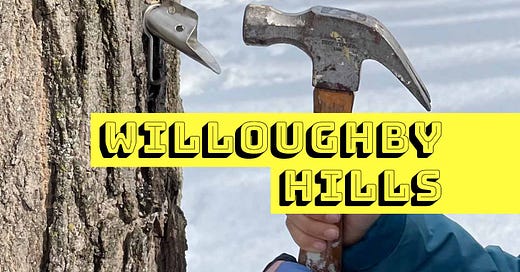



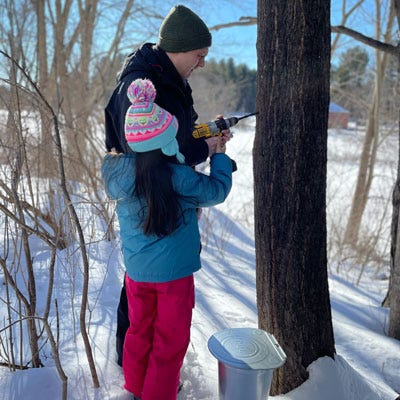
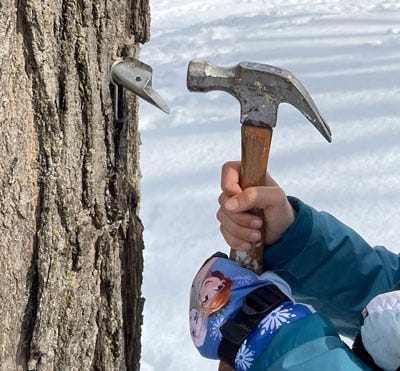
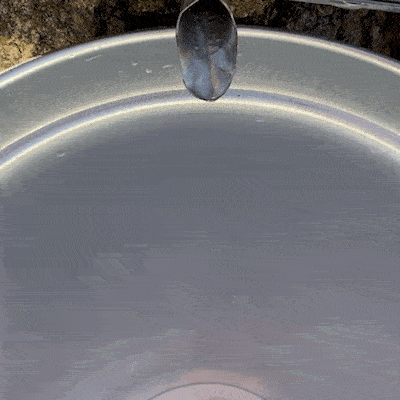
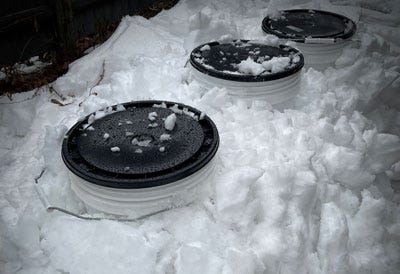
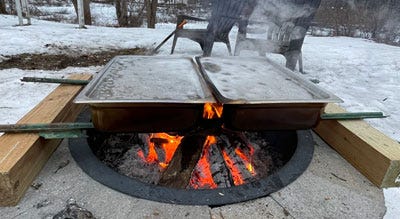
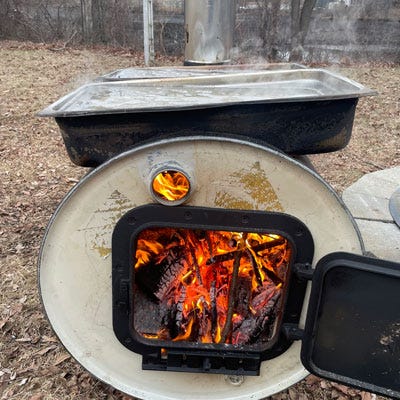

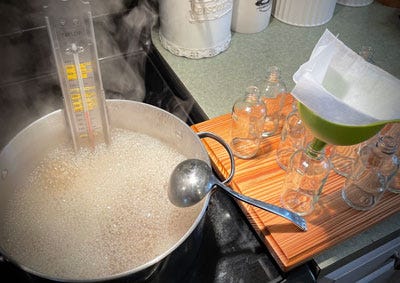
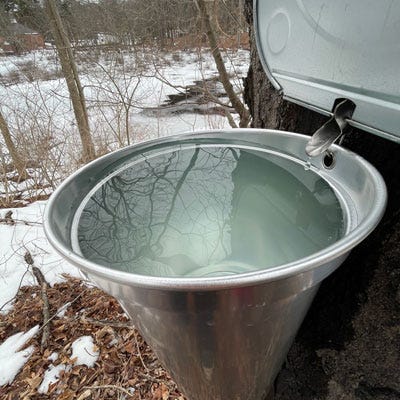
I did not know Mrs. H was a LIW fan. I dragged Paul to DeSmet too! It was a great trip. There are so many, many things in life that I can reference back to learning from the Little House books.
Now I am wanting a waffle. 😉